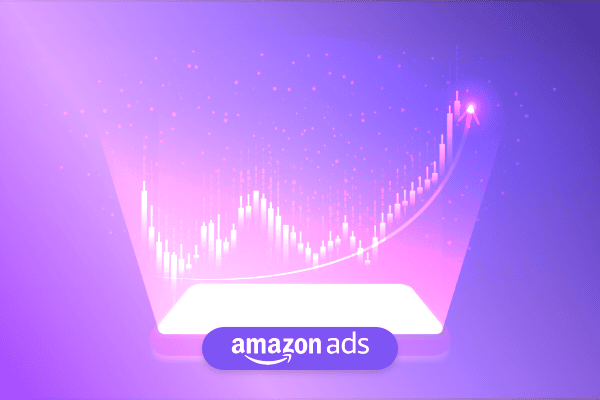Summary
Google’s delayed timeline for phasing out third-party cookies highlights a critical need for marketers to prepare for a cookieless future. With only 20% of marketers feeling prepared, adopting privacy-first advertising approaches is essential. In this first article on marketing’s cookieless future, learn the three guiding principles marketers should adopt to survive and thrive.
Read the entire Adapting to a Post Cookie World series
- Crafting a Winning Post-Cookie Game Plan: Three Essential Principles
- How to Adapt Research and Planning for the Post-Cookie Marketing Landscape
- Precision Marketing in the New Age: Targeting and Bidding Beyond Cookies
- Redefining Ad Creative and Personalization Best Practices in the Post-Cookie World
- Making Marketing Measurement and Optimization Work Without Cookies
They’re not gone yet.
In a familiar refrain to digital marketers everywhere, Google again extended the timeline for phasing out third-party cookies in April. Each announcement pushes the deadline forward and prolongs the inevitable.
But, imagine…Day Zero.
One morning, in a future not too distant, the long-discussed day will finally arrive. You and your colleagues will wake up to breaking news flooding every digital marketing channel: “The Cookieless Era Has Begun.” This time, it won’t be a drill. The third-party cookie will have officially been retired. It’s a pivotal moment, marking a seismic shift in digital marketing practices.
While the changes to third-party cookies have been on our radar for years, only 20% of marketers believe they are fully prepared for a cookieless future. This shocking statistic emphasizes the critical need for businesses to change their marketing strategies and adopt privacy-first advertising approaches. As we saw six years ago, during the last big privacy initiative — the EU’s General Data Protection Regulation — 73% of businesses were not ready to satisfy the compliance obligations of the GDPR, and 23% of businesses felt they were only partly compliant by the May 2018 deadline.
Are you ready for Day Zero of the cookieless future?
While many articles have been written about why cookies are being deprecated and what is happening, the real focus needs to be on how marketers should proceed. This six-part series will navigate through this uncharted territory, laying out the practical implications of a world without third-party cookies, with actionable steps to take for each stage of the campaign lifecycle.
Three guiding principles to consider for your post-cookie game plan
There are many ways that marketers have expressed their intentions to end their reliance on third-party cookies. While there are certainly a variety of options and paths to choose, consider these three tenets to help guide your approach:
1. Don’t fight it, embrace it. Whether you agree or don’t agree with these industry initiatives, third-party cookies will go away for good (only the date is an open question). Privacy supporters claim that making the internet a safe and more secure place will usher in a new era of expanded and accelerated online growth. On top of that, Google and others have already stated that they won’t allow any workarounds. It’s time to adapt, not fight or look for ways to continue doing what you’ve done before.
2. Migrate more budgets to walled garden publishers. Closed ecosystems (Google, Meta, Apple, Microsoft, etc.) will still be able to offer marketers a similar level of advanced targeting, personalization, measurement, etc., that third-party cookies enable. The good news is that just about every major company is already working with these publishers, so it won’t be a huge change management process. You likely have teams or agencies (or both) dedicated to these huge walled gardens which means you already have the expertise, workflow, and tools in place to shift budgets effectively.
3. Win back performance 1% at a time. Within the campaign lifecycle, there are many opportunities to increase efficiency that many marketers have never explored because third-party cookie capabilities were available. It might take some time, but as you find these hidden pockets of performance, you can reach similar success KPIs as you did with third-party cookies. It may mean taking on tasks you’ve never done before or approaching things differently, but the efficiency is there.
1. Don’t combat, adapt: accepting the inevitable change
The loss of third-party cookies will completely disrupt the digital media ecosystem. Most advertisers think about third-party cookies in the context of targeting, but they are used across various tools that span data collection, audience segmentation, and measurement.
According to a recent study, 44% of marketers plan to increase their spending by 5-25% to achieve the same results as before. Does that sound like the right approach? Of course not! If your strategy is to simply spend more to make up the projected conversion drop, you’re not thinking the right way.
Many marketers simply want to ignore this huge shift and have sought direct replacements or workarounds in response to the impending loss of third-party cookies. However, attempting to replicate the functionality of third-party cookies is difficult and ignores the fundamental privacy concerns that led to their deprecation. Instead, marketers should concentrate on developing new strategies that prioritize privacy while respecting consumer preferences.
So then, what is the right approach?
Embracing change, rather than fighting it, is the key to success in the changing digital landscape.
While this is just a shift in thinking, it might be much harder to accomplish than it would seem. Changing how marketers think about marketing and selling in a new way will require much discussion and compromise. It could change how you go to market, allocate budgets, and even rethink existing team structures. Marketing organizations that adapt quickly and prioritize privacy will be in a solid position to succeed.
2. Migrate budgets to walled gardens
Gartner recommends walled gardens like Google, Meta, Apple, and Amazon as key options for marketers to consider in their post-cookie plans. “Digital marketing leaders should prepare by exploring how leading brands adapt ad efforts within the walled gardens.”
According to Gartner research, marketers are expected to reallocate more of their ad budgets to walled gardens in order to access their robust consumer data sets and privacy-compliant environments. These platforms provide advanced targeting and measurement tools, allowing advertisers to reach their desired audiences without third-party cookies. As a result, walled gardens are becoming more critical for marketers seeking to maintain advertising effectiveness.
Walled gardens also have a lot to lose in this shift, so they have already invested heavily in developing privacy-compliant advertising solutions. They have implemented strict data policies and user consent mechanisms to ensure compliance with evolving privacy regulations.
This proactive approach to privacy has positioned walled gardens as trusted partners for marketers looking to navigate the complex landscape of data privacy. By migrating ad budgets to these platforms, marketers can benefit from their robust data capabilities while ensuring their advertising practices remain compliant with privacy standard
3. Find efficiencies throughout the campaign lifecycle
Many marketers believe that the loss of third-party cookies will significantly impact their programs, leading to a crash in performance. However, numerous opportunities remain for efficiency gains throughout the campaign lifecycle. By focusing on these areas, marketers can mitigate the potential drop in performance and adapt to the post-cookie landscape.
In Research and Planning, the deprecation of third-party cookies presents challenges in gathering audience insights in order to develop solid media plans. To overcome these hurdles, marketers should focus on developing a robust first-party data strategy. By leveraging advanced customer research tools and predictive analytics, marketers can gain valuable insights for better campaign planning. Walled gardens can also be crucial in this stage, offering access to detailed demographic insights, behavioral data, and predictive modeling tools.
When it comes to Targeting and Bidding, the absence of third-party data requires a shift in strategies. Marketers must explore alternative targeting methods, such as contextual and behavioral targeting, and adopt AI-driven bid optimization. Walled gardens provide sophisticated targeting tools and automated bidding systems to help marketers place their ads effectively and reach their desired audiences.
Creative Strategies will become even more critical in the post-cookie era. With limited direct targeting capabilities, engaging and compelling ad creatives are essential to capture audience attention. Marketers should invest in data-driven insights for creative personalization, explore new formats and platforms for content distribution, and continuously test and refine their creatives. Walled gardens offer unique ad formats, creative studios, and engagement tools that can help marketers captivate their audiences.
Measurement and Optimization will also undergo significant changes in the new era. The loss of granular tracking capabilities poses challenges in accurately measuring and optimizing marketing efforts. Marketers must embrace alternative metrics and methodologies, leverage machine learning for predictive insights, and focus on quality interactions and engagement. Walled gardens provide advanced analytics, attribution models, and optimization features to help marketers precisely measure and enhance their campaigns.
By focusing on efficiency gains — 1% at a time — across the campaign lifecycle and strategically leveraging the capabilities of walled gardens, marketers can successfully navigate the post-cookie landscape.
Follow this series to learn how to thrive in the post-cookie world
The loss of third-party cookies creates both challenges and opportunities for marketers. While it may necessitate significant changes to existing strategies and technologies, it also paves the way for more innovative, privacy-focused approaches to advertising. Marketers can navigate this new landscape effectively by focusing on first-party data, contextual targeting, and transparent consumer relationships.
As we progress through this series, we’ll explore specific strategies and solutions for navigating the post-cookie landscape. From leveraging first-party data and contextual targeting to experimenting with different ad formats and measurement techniques, each post will provide actionable insights to help marketers stay ahead of the competition.
Stay tuned for the next installment, where we’ll look at the power of first-party data and how to create effective data strategies in a cookie-less world during Research and Planning. In the meantime, evaluate your current marketing strategies and identify areas where you can make privacy-first changes. Remember that the key to success is proactive adaptation and a willingness to embrace change.







